The CTIP program has funded multiple, innovative projects focused on geotechnical to help practitioners advance the industry.
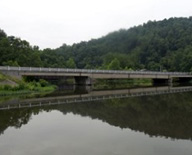
Carbon Fiber Reinforced Polymer Bridge Repair, 2015
The goal of this project is to collect data and refine the Carbon Fiber Reinforced Polymer Bridge repair procedure to help make this repair method a more widespread solution for concrete bridges in poor condition. Refined repair procedures will enable construction contractors to perform this repair satisfactorily on a more consistent basis, which will also help to make this repair a prevalent option. The technology will be deployed to repair the prestressed concrete box beams on the Opekiska Whiteday Creek Bridge. The lead agency on this project is the U.S. Army Corps of Engineers. ...show more about
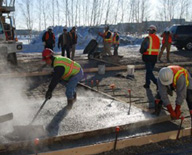
Cold Weather Concreting, 2015
The goal of this project is to demonstrate the effectiveness of using cold-weather concrete technology in extending the concrete construction season, so concrete can be mixed, placed and cured in subfreezing temperatures, without having to construct enclosures and install heaters in the temporary structures. The project demonstrations will build upon the research and testing that has been performed by the USACE Cold Regions Research and Engineering Laboratory. The technology will be deployed in an ADA walkway at the St Croix National Historic Site; on a sidewalk in the Green Mountain National Forest, and in a concrete pad within the Hartland Dam Recreation Area, Vermont. The U.S. Forest Service is the lead agency. ...show more about
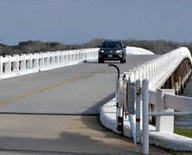
Integrally Cured Concrete (ICC), 2015
The goal of this project is to demonstrate how to extend the life and durability of concrete by providing internal curing of the concrete by substituting highly absorptive lightweight fine aggregate for a portion of the normal fine aggregate. ASTM International released a new standard specification for Lightweight Aggregate for Internal Curing of Concrete that provides test methods and information for evaluating and incorporating lightweight, absorbent aggregates for internal curing of concrete. This project will develop a refined guide specification, lessons learned, and recommended best practices for application by FLMAs and tribes. This technology will be deployed on the Fort Pulaski National Monument Bridge near Savannah, Georgia. FHWA is the lead agency. ...show more about
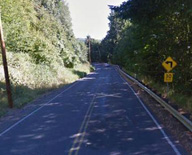
High Friction Surface Treatments (HFST), 2015
The goal of this project is to demonstrate the application of safety-enhancing high-friction surface treatments at critical locations to improve pavement surface skid-resistant properties. Critical locations, like horizontal curves, make up a small percentage of U.S. highways. However, more than 25 percent of fatal crashes occur on horizontal curves. Adoption of this cost effective innovative technique has the potential to reduce run-off-road crashes and save lives on federal and tribal roadways. Treatments will be deployed at two locations in the Wynoochee National Forest near Grays Harbor, Washington, in the Grand Teton National Park and at two locations in the Great Smoky Mountains National Park. The lead agency is FHWA. ...show more about
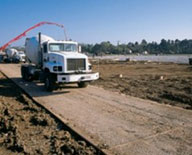
Temporary Road Surface Mats, 2015
The goal of this project is to demonstrate the temporal, monetary, and natural resource benefits of using the temporary mats to bridge across soft, wet, and sensitive areas. Extensive work and research relevant to the project has been completed by the U. S. Army Corps of Engineers, Engineer Research and Development Center (ERDC). The ERDC has developed a selection matrix based on performance to assist potential users in making informed decisions on which mat system will best spread the load of heavy vehicles over wet and sensitive soils before system procurement. The matrix will be used to select and deploy a variety of mats to bridge areas in the Apalachicola and the Allegheny National Forests in Florida. The lead agency is the U.S. Forest Service. ...show more about
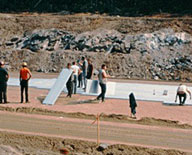
Insulated Pavement, 2015
The goal of this project is to demonstrate the effectiveness of placing a layer of extruded polystyrene between the subgrade and base course in a pavement structure. This insulating layer prevents frost from penetrating into the first susceptible subgrade, and ultimately prevents damage from frost action. More specifically, since the subgrade does not experience freezing temperatures, it doesn 't freeze, and in turn doesn 't undergo thaw weakening, which, in combination with traffic, results in rutting and cracking. Similarly, since the subgrade doesn't freeze, there is minimal frost heaving and resulting cracking from differential frost heave. This innovative technology will be deployed in the Kootenai National Forest, Montana and a similar section at the St. Gaudens National Historic Site in New Hampshire. The U.S. Forest Service is the lead agency. ...show more about
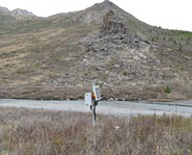
Remote Geotechnical Monitoring, 2014
Many Federal Land Management Agencies and Tribes have roads and other transportation facilities that are located in remote areas. Landslides, debris flows, and other forms of mass wasting frequently cause substantial damage to these assets so it is necessary to install subsurface instrumentation to determine depth and movement. Site monitoring using traditional methods can be expensive, sometimes seasonally inaccessible, and does not provide real time data. This project has implemented remote geotechnical monitoring to automate real-time performance data collection at two remote locations in Denali National Park & Preserve in Alaska. ...show more about
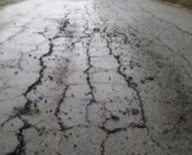
Radio Frequency Identification (RFID) Technology for Low Cost Monitoring of Soil Moisture and Temperatures, 2014
Studies have shown that just two or three heavy trucks on thaw-weakened low volume paved roads can result in the same amount of damage as normal traffic the remainder of the year. Such catastrophic damage is easily preventable if data exists to make road management decisions. RFID sensors are being fabricated that can collect frost and thaw depths throughout the winter/spring and in combination with local weather forecasts and current conditions. A predicted date for placing seasonal load restrictions can then be determined. Instrumentation will be deployed late summer or fall 2015 in the National Forests of Allegany (Pennsylvania), Kootenai (Montana), and Grand Mesa, Uncompahgre, Gunnison (Colorado). A fourth site from Oregon or Washington will also be selected. The U.S. Forest Service is the lead agency. ...show more about
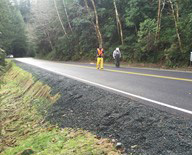
Deep Patch Field Instrumentation, 2014
Many roads in mountainous terrain are plagued with widespread subsurface instability problems. Deep Patch Embankment Repair with Geosynthetics (DPERG) is broadly used by many transportation agencies as a cost effective method to mitigate recurring pavement damage due to shallow slope instabilities. This project has instrumented a full depth deep patch installation to better understand behavior and performance on an ERFO project near Gold Beach, OR. The collected data will be analyzed to optimize the design of deep patch construction to make it more efficient for widespread use. ...show more about